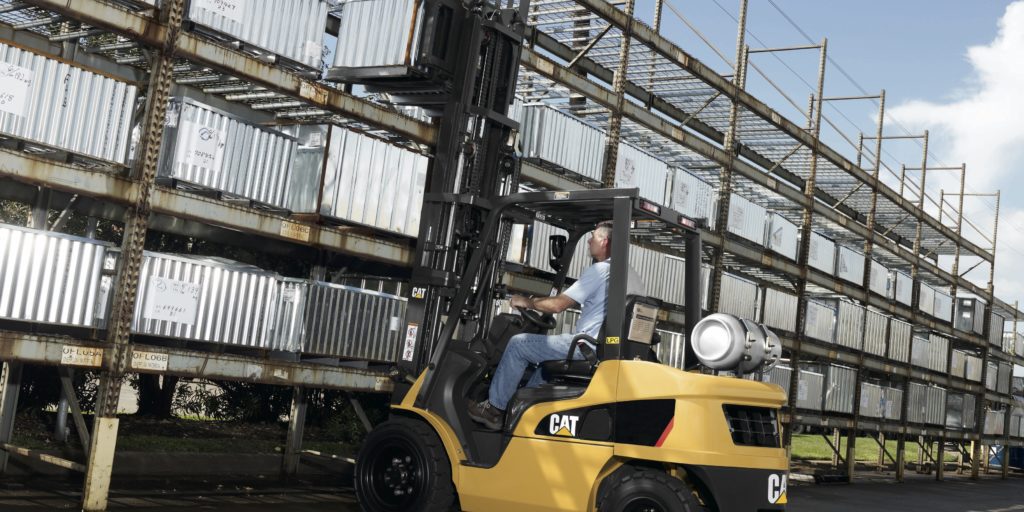Strategies for Safely Loading Pallets onto Industrial Racking Systems

Warehouses that implement the right industrial racking systems set themselves up for the efficient management of their inventory. Once those systems are in place, warehouses must also use proper product storage practices to make the best use of their new shelving. Best practices and safety measures allow warehouses to more efficiently and safely store their inventory. Here are some of the most important tips for achieving safe and compact storage of pallets.
[CUTOFF]Select the right industrial racking systems for oddly-shaped products.
Most products come in standard-sized pallets and boxes. These can sit on almost any racking system because of their predictable size and shape. However, some items are oddly-shaped. For example, pipes, siding, and other materials are too long or too heavy to fit into standard pallets. They do not fit neatly into many storage systems.
For these items, you need to select a racking system that can accommodate their unusual shape or size. For example, cantilever storage systems provide adjustable metal arms that can shift to accommodate differently-sized products. In addition, they remain open to the aisle, with no metal columns to interfere with the storage of long items.
Choosing a storage system that can accommodate the products you need to store can make it easier to safely and efficiently keep your oddly-shaped inventory. The right system can also make it easier to retrieve these items without risking accidents or wasting time. A dealer like Darr Equipment can help you evaluate your needs so you can find the right system for storing your specific inventory.
Never overload your shelving.
Every racking system will come with capacity limits. These limits define how much weight the shelving can handle. Never exceed these limits. It may be tempting, particularly in a world of increasing inventory demands, to add an extra pallet or two to your shelves in order to make everything fit.
However, too much weight can collapse your industrial racking systems. A collapse can do more than damage valuable inventory; it can lead to serious injury or even death. You must observe capacity limits for all of your racking systems, and you must post these limits clearly on each shelving unit so every employee knows and can observe these limits as well.
If you need more storage space, you should consult with a reliable dealer (like Darr Equipment) about how to upgrade your warehouse shelving racks to accommodate more inventory. There are space-saving, capacity-increasing solutions that do not require you to overload your current shelving solutions.
Observe all stacking limitations.
Weight is not the only consideration when stacking pallets on your racking systems. You also need to consider how high you are stacking your pallets on the top shelf. While you may have extra room at the top, because there are no shelves above it, there are still height limits to observe.
In general, do not stack pallets more than 4 high. In addition, consider regulations, such as clearance regulations regarding sprinklers and smoke alarms, when stacking your pallets. Properly stacked pallets will be less likely to tip or to hinder fire suppression systems in an emergency.
Avoid overhang.
When loading your industrial racking systems, it can be tempting to place as many pallets as possible on each shelf, even if they do not fit exactly right. An inch or two of overhang on the sides may not seem (or look) like a big deal.
The reality, however, is that even a little bit of overhang can cause problems. For example, when forklifts drive by, they can easily run into pallets that extend past the sides of the racking system. While the collision itself might not damage the forklift, it might be enough to topple the shelving unit. Overhang can also leave edges where things can get caught, again damaging items and leading to a shelving collapse.
In order to avoid these potentially catastrophic accidents, do not allow pallets to hang over the edges of your warehouse racking systems. Such overhang violates OSHA regulations, so it can lead not only to costly accidents but to legal penalties as well. Instead, pallets that will not fit perfectly on the shelf should be placed on another area of the shelving unit in order to guarantee a safe work area for everyone.
Distribute weight evenly.
Observing weight limits on your shelving units is critical to the safe storage of your pallets. However, shelves can collapse even if you do not violate the weight limits if you concentrate the weight too much in one area.
Uneven weight distribution can overtax one part of the shelving unit and lead to collapse or tipping. Instead, begin stacking pallets in the middle of the rack. Then spread your pallets out from the center. This process keeps the weight evenly distributed and allows you to avoid putting too much weight in one spot.
Load the heaviest pallets on the bottom.
One of the most important best practices for loading industrial racking systems is to load the heaviest pallets on the bottom. As you go up the shelving unit, you place lighter and lighter loads. This system keeps the center of gravity low and prevents collapse.
Loading pallets effectively means following certain best practices. From selecting the right industrial racking systems for oddly-shaped products to following weight limits to loading the heaviest pallets on the bottom, these practices can save you time and money, as well as prevent potentially serious accidents.
You should also start with an effective industrial racking system that meets your specific needs. The right system will maximize your inventory storage, improve accessibility and efficiency, and make it easier to load your pallets safely.
If you need help choosing storage systems for your inventory, do not be afraid to reach out to Darr Equipment. We offer a wide range of warehouse solutions to help you create and run an efficient warehouse.